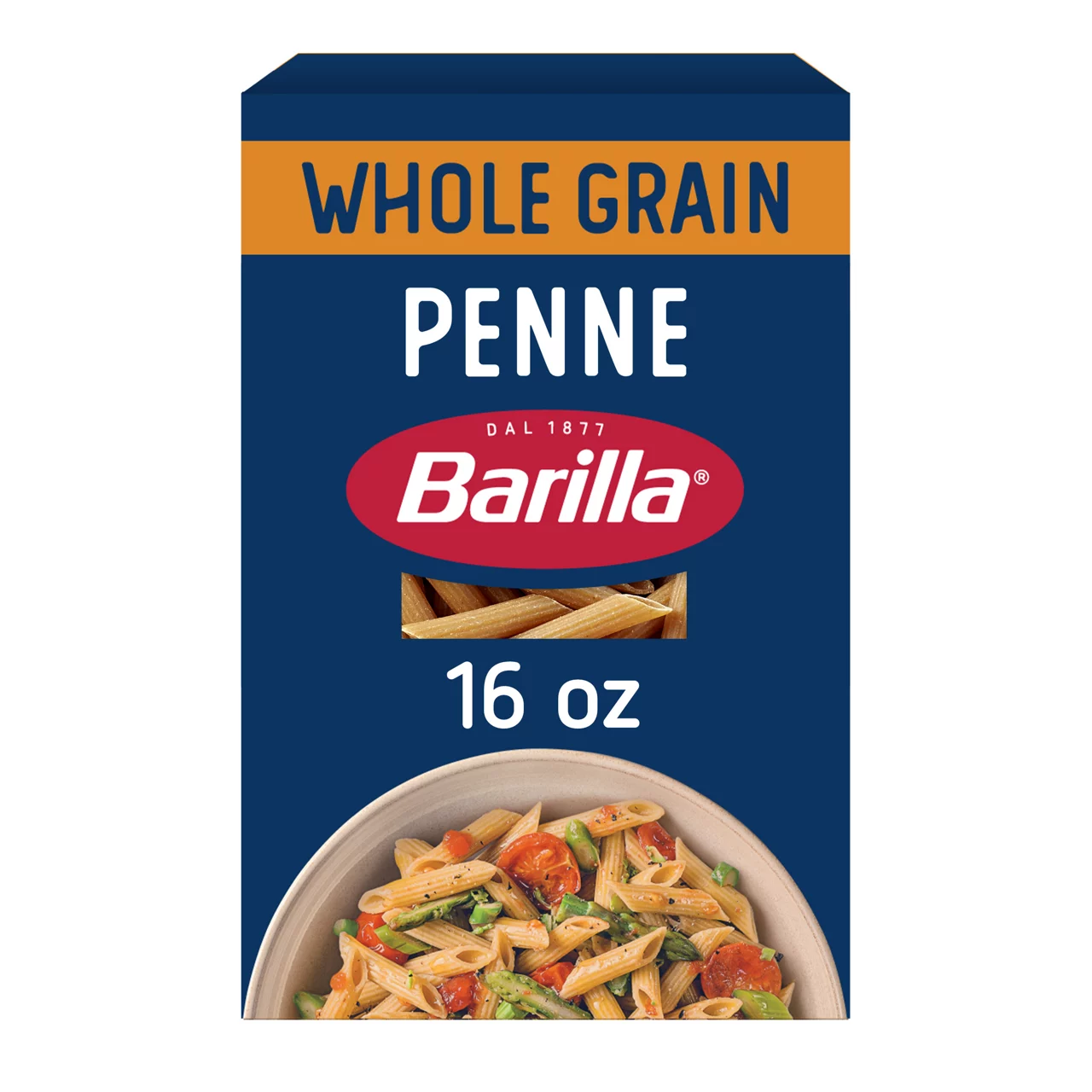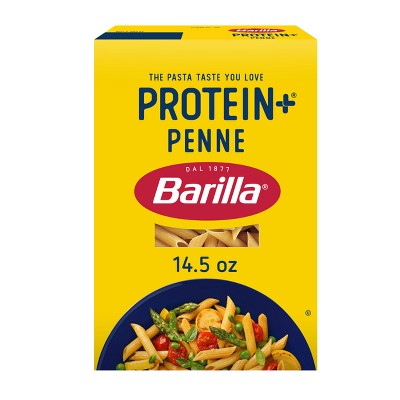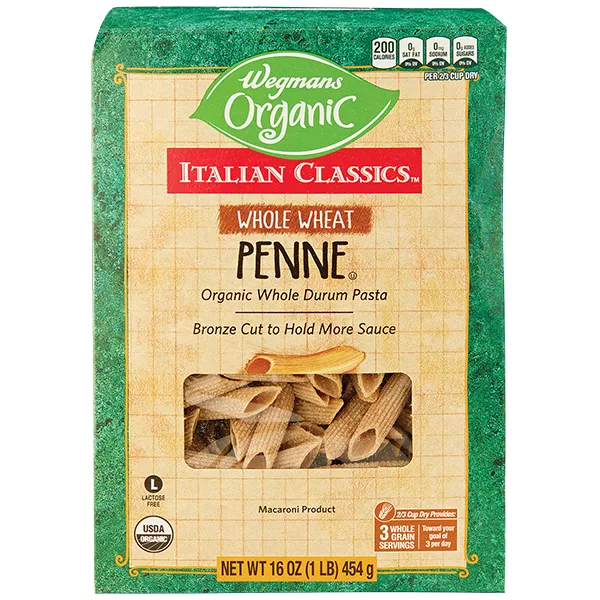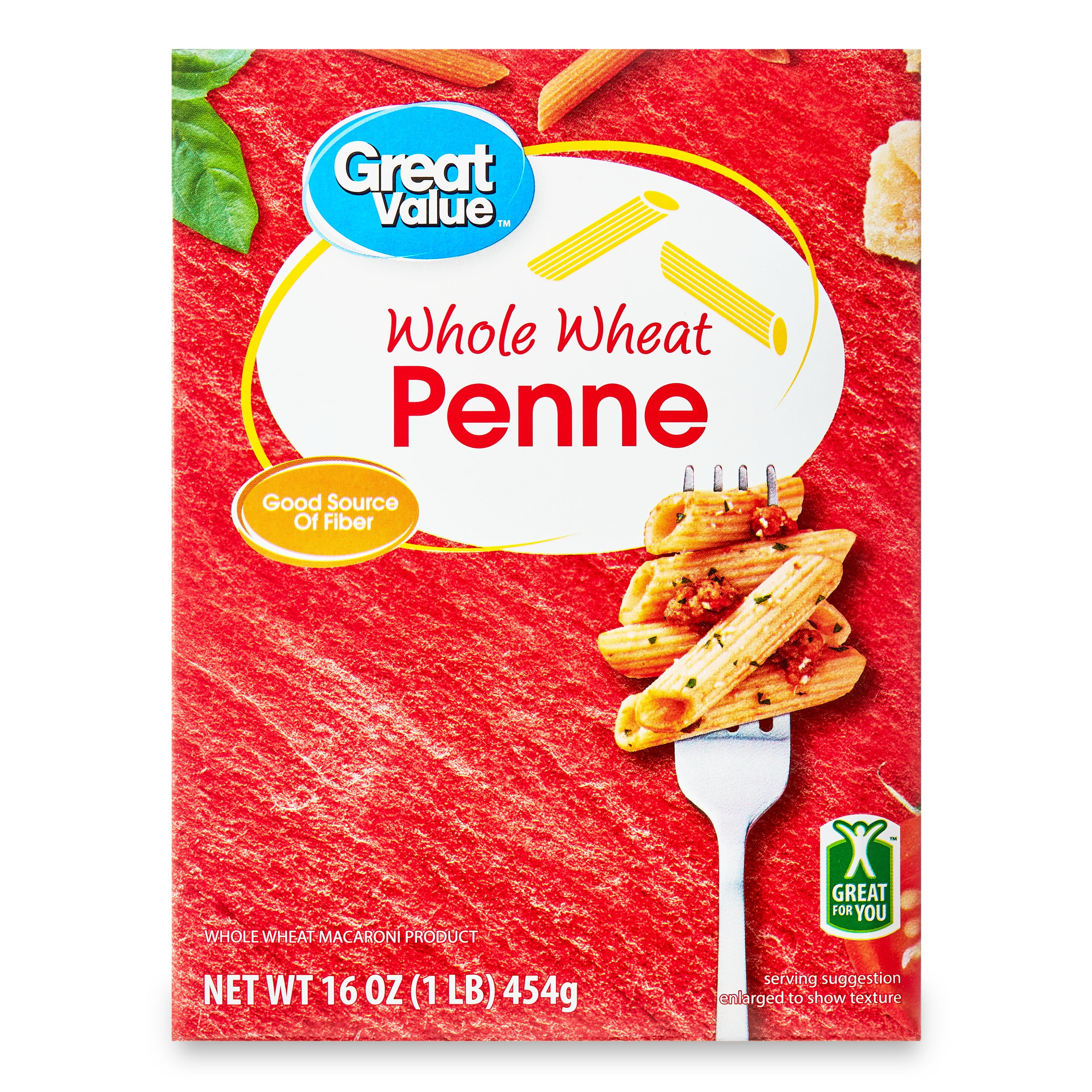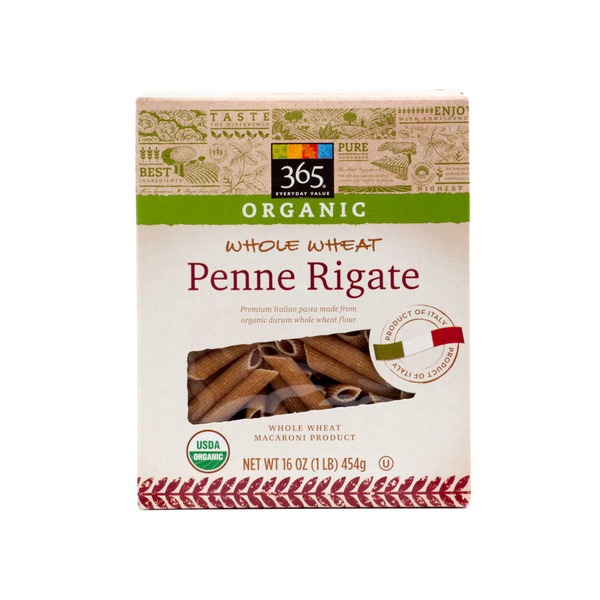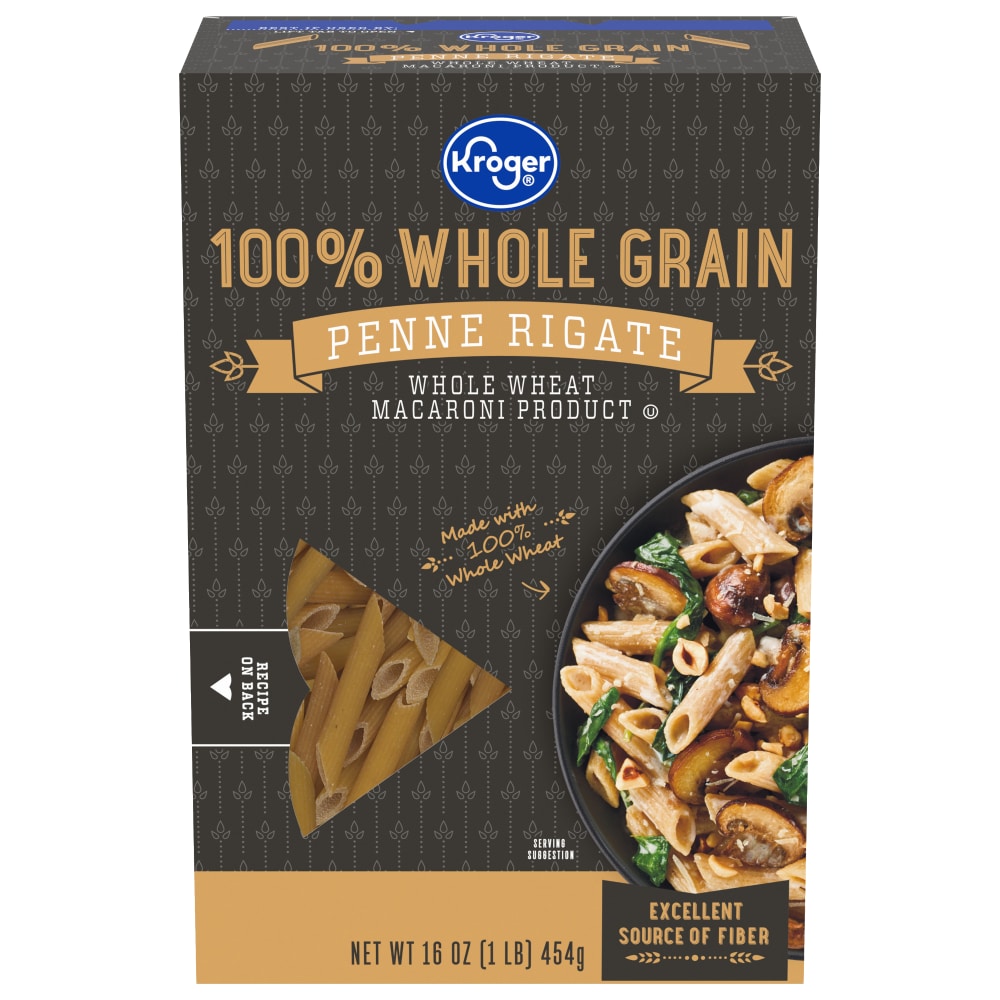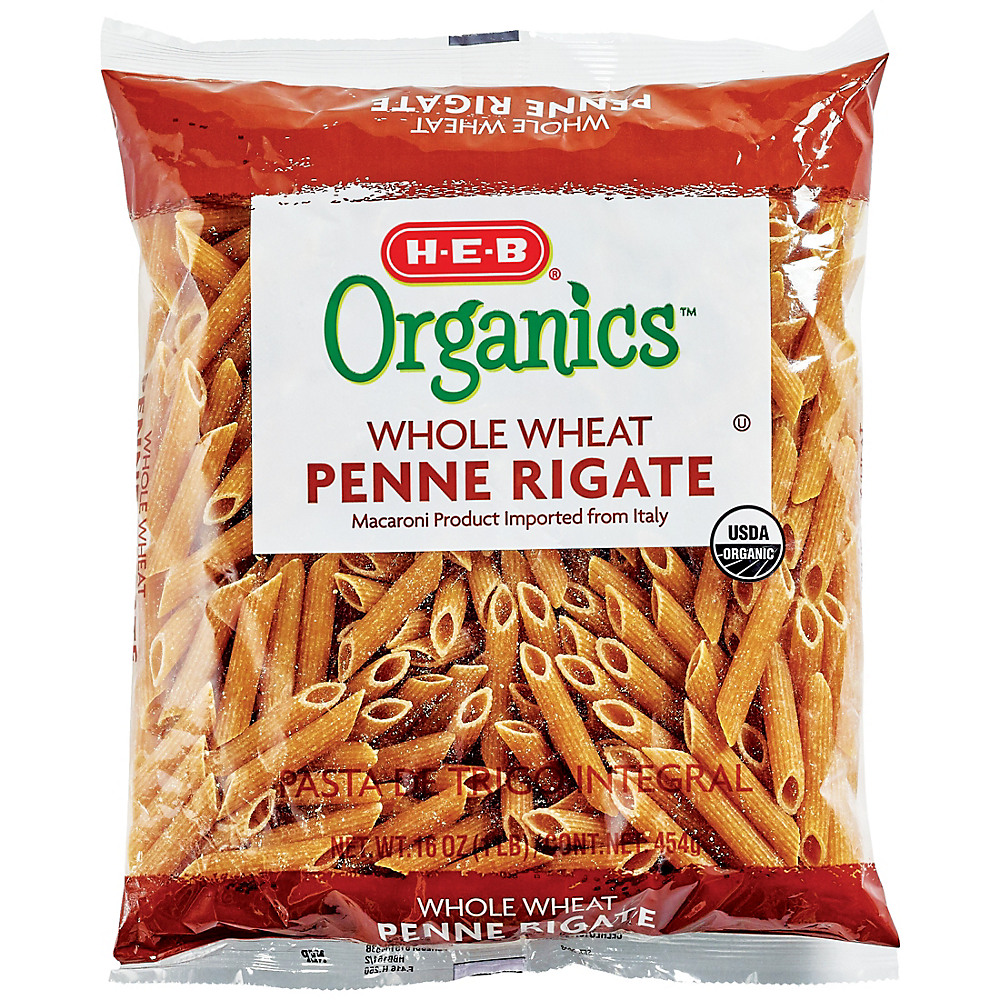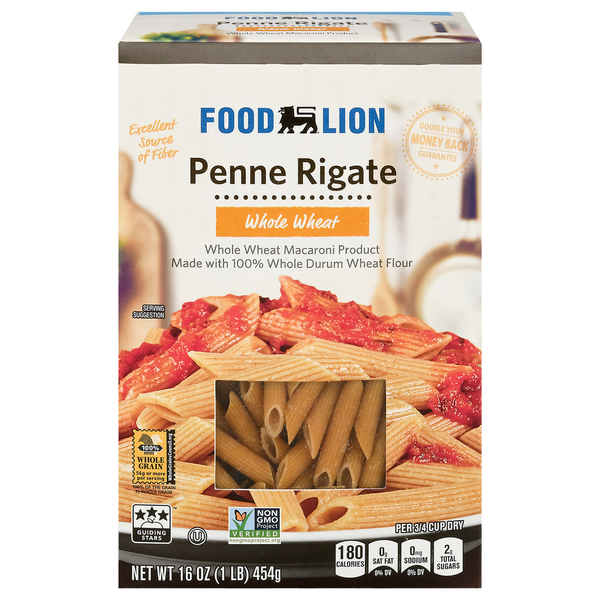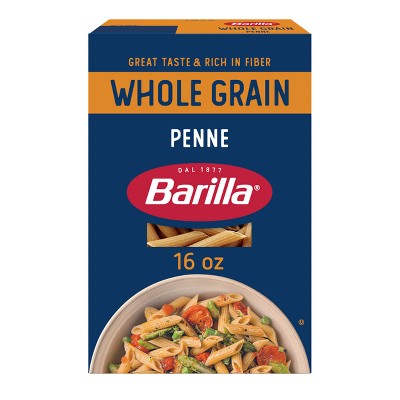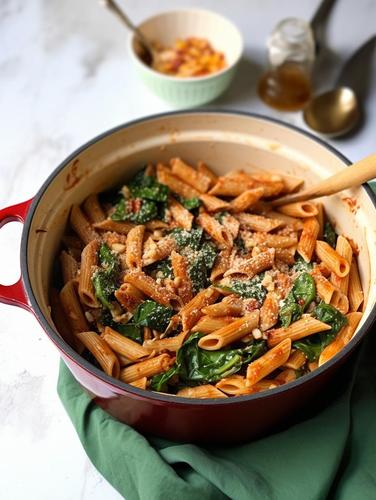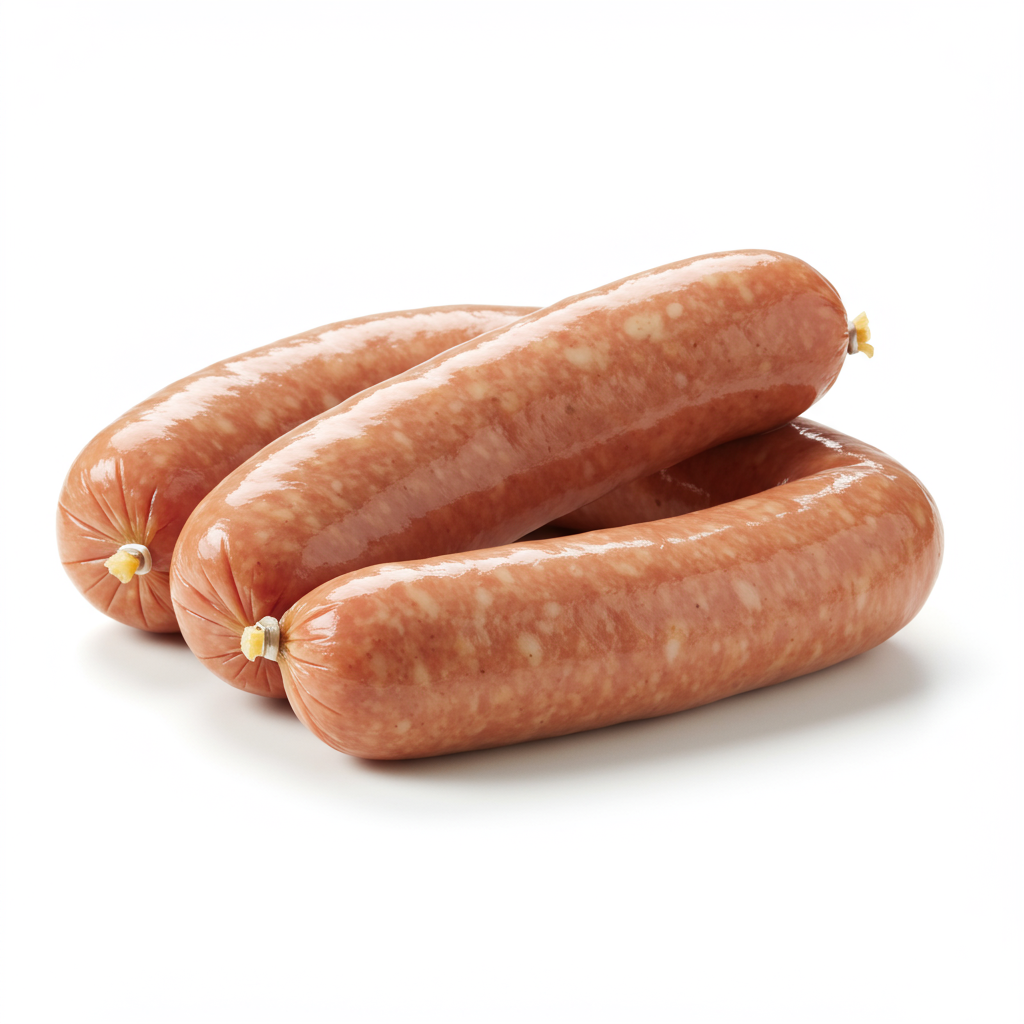MAIN DISHES
SIDE DISHES
LUNCH
Whole Grain Penne Pasta
Whole grain penne pasta is a popular type of pasta made from whole wheat flour, which enhances its nutritional value compared to its traditional counterpart made from refined flour. Penne, meaning "quills" in Italian, is a type of pasta with a cylindrical shape, cut diagonally at both ends, and ridged on the outside, resembling the quill of an old-fashioned ink pen.
This versatile and healthy pasta option is a favorite among home cooks and professional chefs alike, owing to its robust, earthy flavor and firm texture. Whole wheat penne pairs well with a wide variety of sauces, vegetables, and proteins, making it a nutritious and delicious option for classic Italian dishes and contemporary culinary creations.
81%
CARBS
3%
FAT
15%
PROTEIN
179 Whole Grain Penne Pasta Products
Proteinplus Multigrain Penne Pasta - Barilla
Barilla Whole Grain Penne Pasta
Barilla Protein Plus Penne, Grain and Legume Pasta
Wegmans Organic Italian Classics Whole Wheat Penne Pasta
Great Value Whole Wheat Penne
365 Everyday Value 365 Everyday Value, Organic Whole Wheat Penne Rigate Premium Italian Pasta, Whole Wehat Macaroni Product
Kroger® 100% Whole Grain Penne Rigate Pasta
H-E-B Organics Whole Wheat Penne Rigate
Food Lion Whole Wheat Macaroni Product, Penne Rigate
Barilla Whole Grain Penne Pasta
Used In 18 Recipes
3
Cheesy Chicken Bacon Ranch Penne
5
Garlicky Shrimp Penne Delight
2
One-Pot Penne with Seared Sausage and Bell Peppers
1
Hearty Autumn Harvest Pasta
3
Easy and Flavorful Tuna Pasta Bake
3
Express Lemon Pesto Penne with Blistered Tomatoes and Broccoli
5
Pumpkin Tomato Pasta with Sauteed Chicken
3
Colorful Veggie Pasta Salad
Whole Grain Penne Pasta Is Frequently Used With
Whole Grain Penne Pasta FAQ
Whole wheat penne is a healthier alternative to traditional penne pasta made from refined flour. People often have trouble cooking with it because they either cook it for too long, resulting in a mushy texture, or not long enough, resulting in a tough, chewy texture. The key to getting the most out of whole wheat penne is to cook it 'al dente', which means 'to the tooth'. This will ensure it retains its firm texture and rich, nutty flavor.
Another common issue people encounter when cooking with whole wheat penne is pairing it with the wrong type of sauce. Due to its robust flavor and firm texture, whole wheat penne pairs best with hearty, full-flavored sauces like marinara or bolognese, rather than light, creamy sauces.
When it comes to tips and tricks, remember that whole wheat penne requires more water and a longer cooking time than regular pasta. So be patient, keep an eye on it, and don't forget to stir it occasionally to prevent it from sticking together. You could also add a pinch of salt to the boiling water, which not only seasons the pasta, but also helps to reduce the stickiness.
Finally, make the most of this healthy ingredient by pairing it with other nutrition-packed ingredients like lean proteins, veggies, and healthy fats.
Why is my whole wheat penne mushy?
How long should I cook my whole wheat penne?
Should I rinse my whole wheat penne after cooking?
What sauce goes well with whole wheat penne?
Can I substitute whole wheat penne for regular penne in a recipe?
Why is my whole wheat penne very sticky while cooking?
How can I add more flavor to my whole wheat penne?
Is it necessary to use a lot of water while cooking whole wheat penne?
How do I know when my whole wheat penne is cooked 'al dente'?
What makes whole wheat penne a healthier alternative?
Expiration & Storage Tips
When does whole wheat penne expire?
Unopened whole wheat penne generally has a shelf life of up to three years if stored correctly. Do check the 'best by' date on the package for your particular brand. Once the package has been opened, it should be used within one year. Homemade whole wheat penne is a different story, it will only last up to a week in the pantry, given its lack of preservatives. You can also freeze whole wheat penne to prolong its shelf life. When frozen, it can last up to six months.
How do you tell if whole wheat penne is bad?
You can identify spoiled penne by spotting changes such as a darker color and a distinct off or rancid smell. If you taste the penne and there is a stale or pungent flavor, it means it has gone bad. Also, if you notice bugs or any signs of mold, it's best to discard the pasta immediately.
Tips for storing whole wheat penne to extend shelf life
• Keep the pasta in a cool, dark and dry place like a pantry or cabinet.
• After opening, be sure to close the pasta packaging tightly or consider transferring the pasta to an airtight container to keep it from going stale.
• If you are buying in bulk or won't consume it immediately, freezing is a good option. Store it in airtight freezer-safe storage containers or freezer bags.
• Label the container or bag with the date of freezing, so you'll know how long it's been stored and when to use it by.
• While defrosting frozen pasta, ideally do so in the refrigerator to ensure even and safe thawing. While in a hurry, pasta can be directly added to boiling water while cooking, making sure to stir it occasionally to prevent sticking.
EXPIRES WITHIN
19 - 29
MONTHS
Substitutes

Rigatoni

Chickpea Rigatoni Pasta
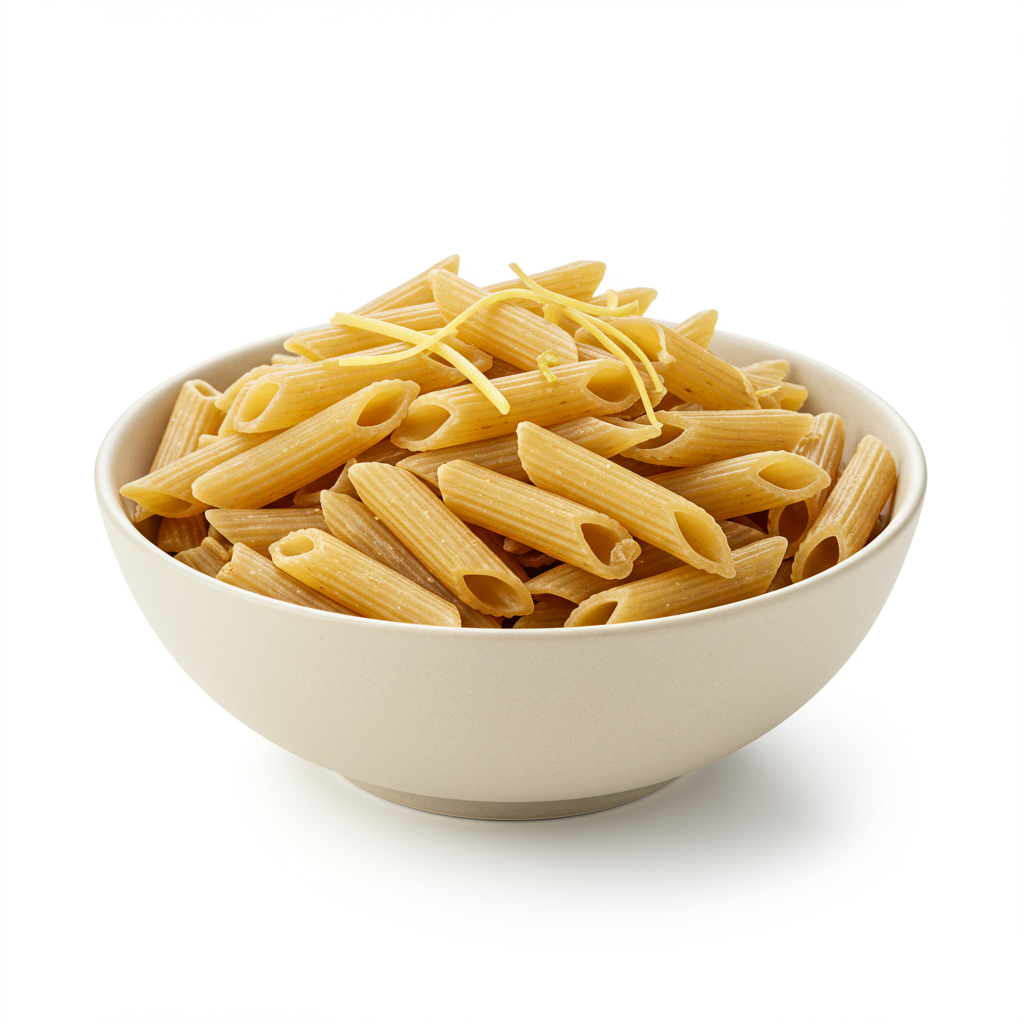
Brown Rice Penne Pasta
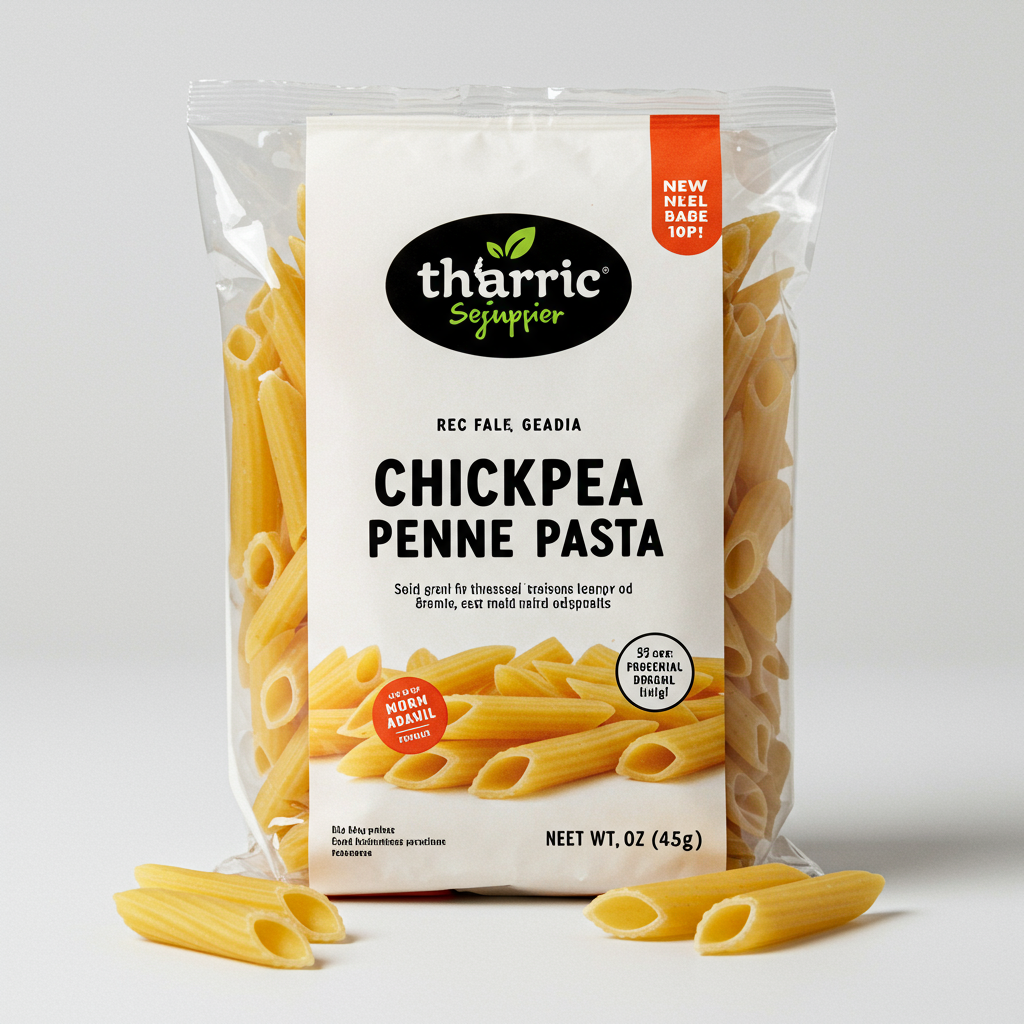
Chickpea Penne Pasta

Gluten Free Penne Pasta

Gluten Free Rigatoni
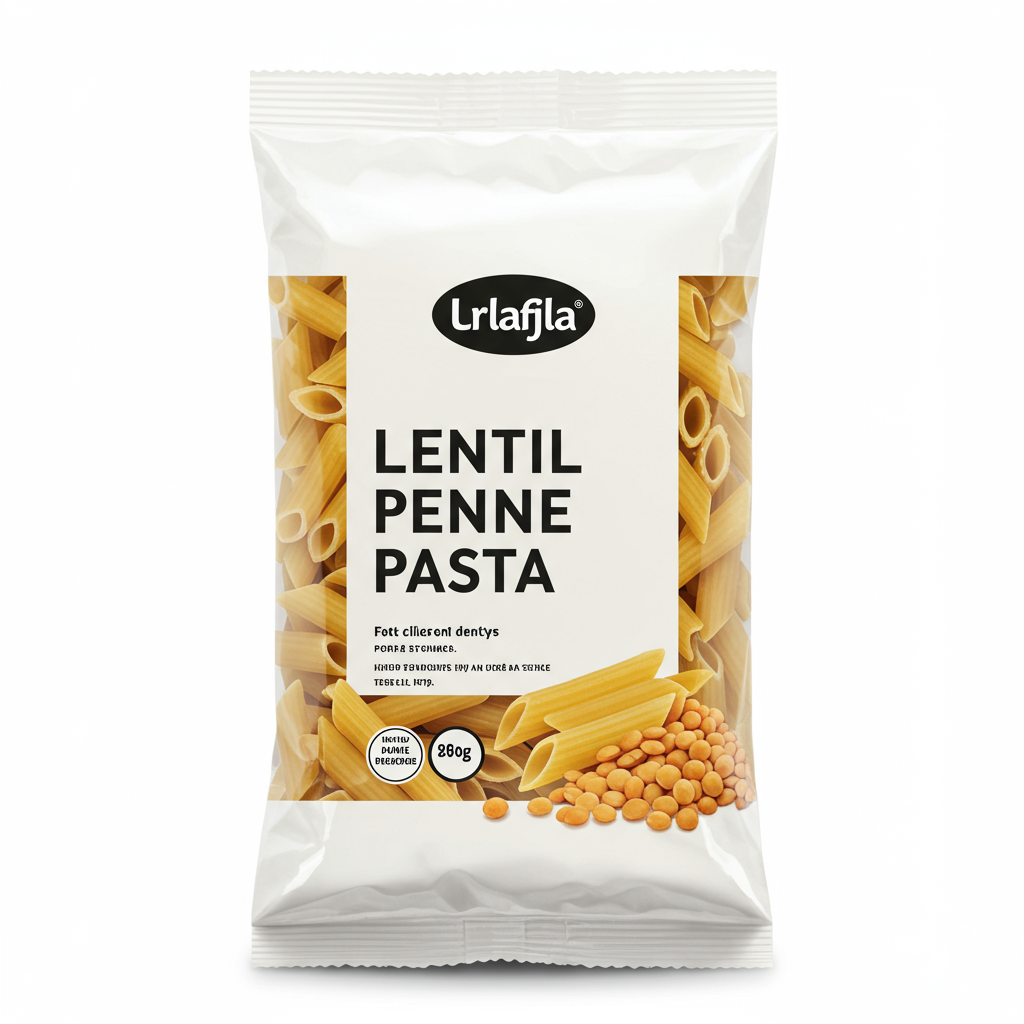
Lentil Penne Pasta

Ziti Pasta

Penne Pasta

Mostaccioli Pasta
See All
Health Info
Macros
41g
CARBS
1g
FAT
7g
PROTEIN
Allowed on these diets
LOW FAT
HIGH CALCIUM
VEGETARIAN
MEDITERRANEAN
VEGAN
LACTOSE FREE
Contains these allergens
WHEAT


